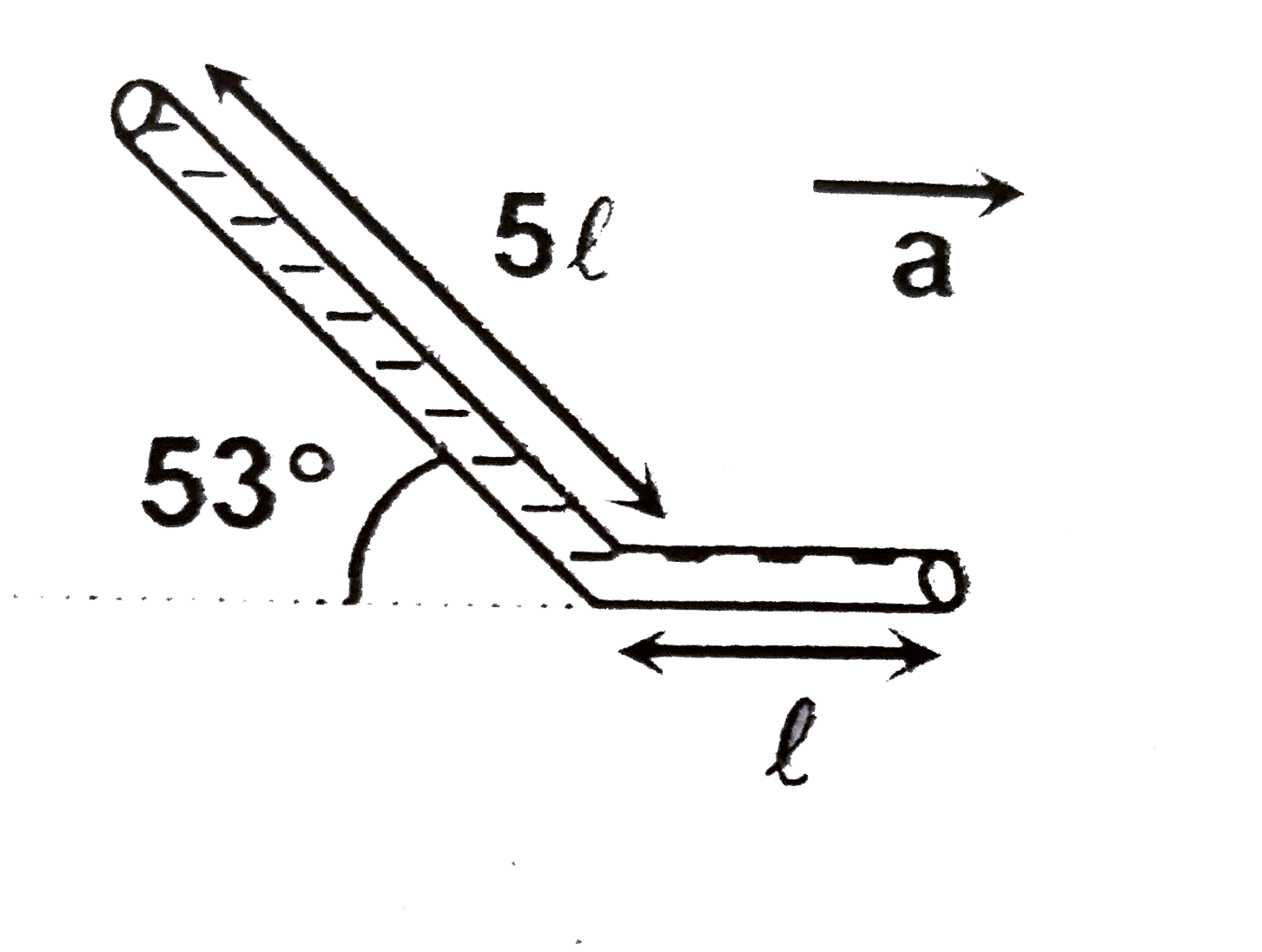A vertical U-tube has two liquids 1 and 2. The heights of liquids columns in both the limbs are h and 2h, as shown in the figure. If the density of the liquid 1 is 2ρ.

a. Find the density of liquid 2.
b. If we accelerate the tube towards right till the heights of liquid columns will be the same, find the acceleration of the tube.
The correct Answer is:35g
First of all we take two points 1 and 2 at the bottom of the left and right vertical limbs. The pressure at 1 is
P1=P0+(2ρ)gh
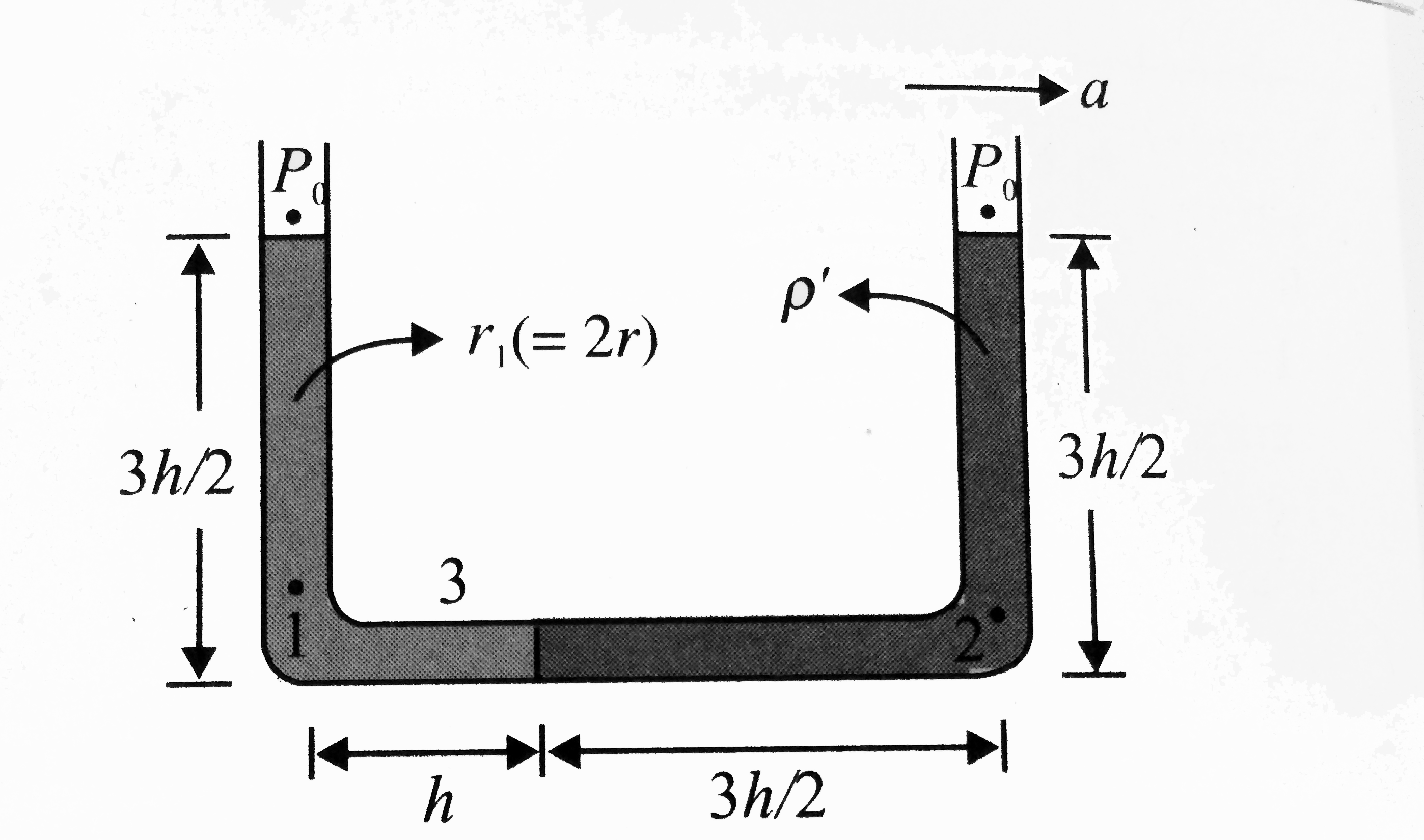
The pressure at 2 is P2=P0+ρ'g(2h)
where ρ'=density of the other liquid
since P1=P2 for stationary liquid, we have
P0+2ρgh=P0+ρ'g(2h)
This gives ρ'ρ.
b. If the levels in both the limbs eqal, conserving the volume of the total (two) liquids, the height of each liquid column will be equal to 3h/2. The length of liqids in the horizontal limbs are h/2 and 3h/2, respectively.
The pressure at interface 3 of the liquid is
P3=P1−(2ρ)a(h2)
Where P2=P0+(2ρ)a(3h2)
This gives P3=P0+(2ρ)g(3h2)−(2ρ)a(h2)
=P0+3ρgh−ρah.........i
P3 can also be give as P3=P2+ρa(3h2) where P2=P0+ρa
(3h2). This gives
P3=P0+32ρgh+32ρah..........ii
Eliminating P3 from eqn i and ii we have
a=35g
Topper's Solved these Questions
- FLUID MECHANICSBOOK - CENGAGE PHYSICS ENGLISHCHAPTER - FLUID MECHANICSEXERCISE - Single Correct
95 Videos
- FLUID MECHANICSBOOK - CENGAGE PHYSICS ENGLISHCHAPTER - FLUID MECHANICSEXERCISE - Multipe Correct
15 Videos
- FLUID MECHANICSBOOK - CENGAGE PHYSICS ENGLISHCHAPTER - FLUID MECHANICSEXERCISE - Exercise 4.4
10 Videos
- DIMENSIONS & MEASUREMENTBOOK - CENGAGE PHYSICS ENGLISHCHAPTER - DIMENSIONS & MEASUREMENTEXERCISE - Integer
2 Videos
- GRAVITATIONBOOK - CENGAGE PHYSICS ENGLISHCHAPTER - GRAVITATIONEXERCISE - INTEGER_TYPE
1 Videos
Similar Questions
Knowledge Check
Motion of an oscillating liquid column in a U-tube is
Aperiodic but not simple harmonic.Bnon-periodicCsimple harmonic and time period is independent of the density of the liquid.Dsimple harmonic and time period is directly proportional to the density of the liquid.Motion of an oscillating liquid column in a U-tube is
Aperiodic but not simple harmonic.Bnon-periodicCsimple harmonic and time period is independent of the density of the liquid.Dsimple harmonic and time period is directly proportional to the density of the liquid.
Find time period of liquid column of length l in the shown tube.

View Solution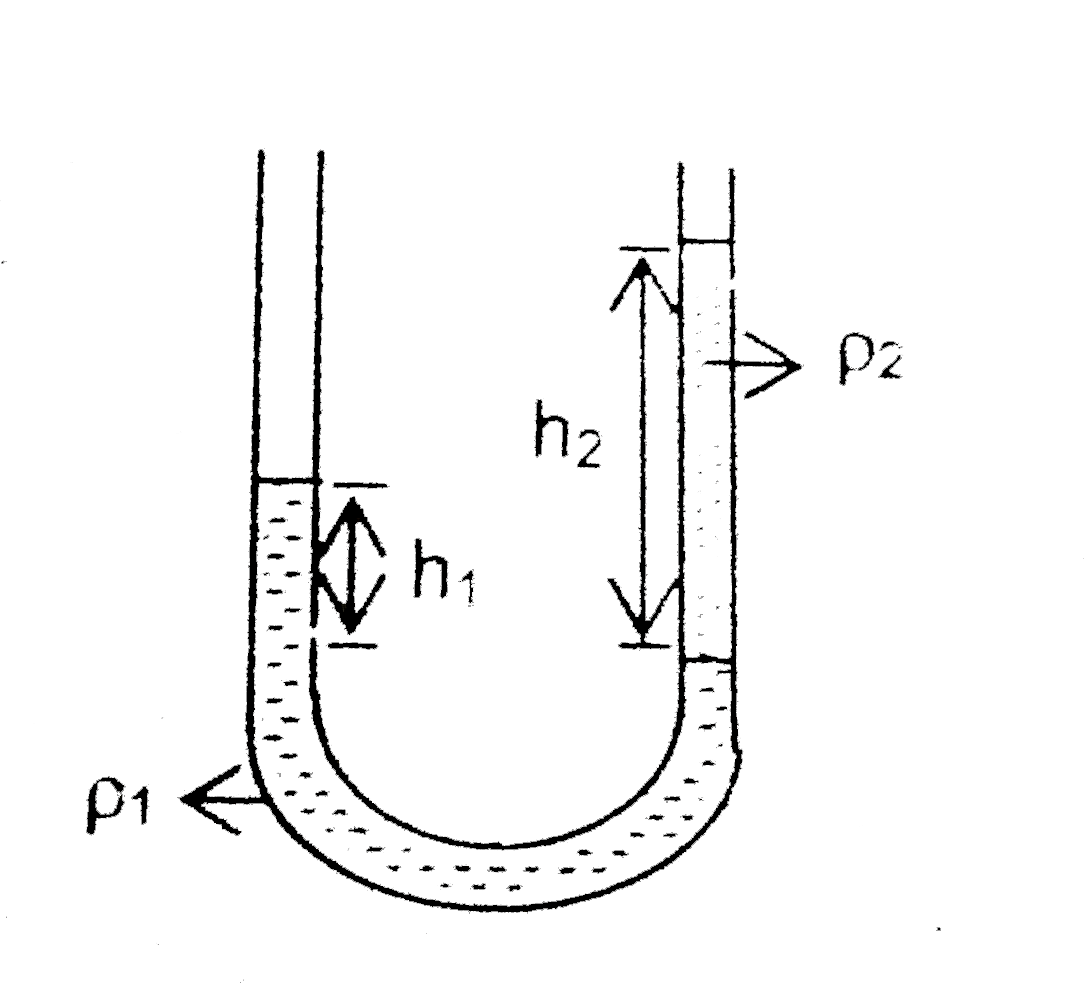
Two liquids which do not react chemically are placed in a bent tube as shown in figure. The height of the liquids above their surface of separation are
View SolutionA liquid of density ρ is filled in a U-tube is accelerated with an acceleration a so that the height of liquid in its two vertical arms are h1andh2 as shown in the figure. If l is the length of horizontal arm of the tube, the acceleration a is

View SolutionThe ratio of the radius of the tube of a venturimeter is η(η>1) . The ratio of the densities of the liquid in the manometer and the moving fluid is η1 . If the difference in heights of the liquid column in the manometer is h , find the minimum speed of flow of the fluid .
View SolutionTwo chemically non-reactive liquids are placed in a U-shaped tube as shown in the figure. The height of any liquid above a common reference line is
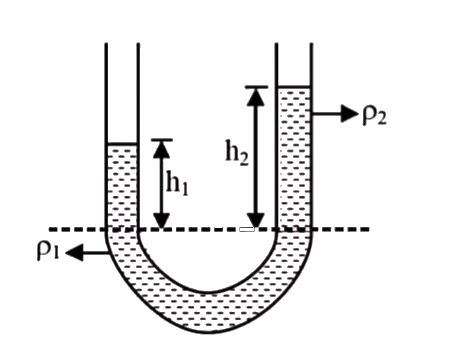
View SolutionThe velocity of the liquid coming out of a small hole of a vessel containing two different liquids of densities 2ρ and ρ as shown in the figure is
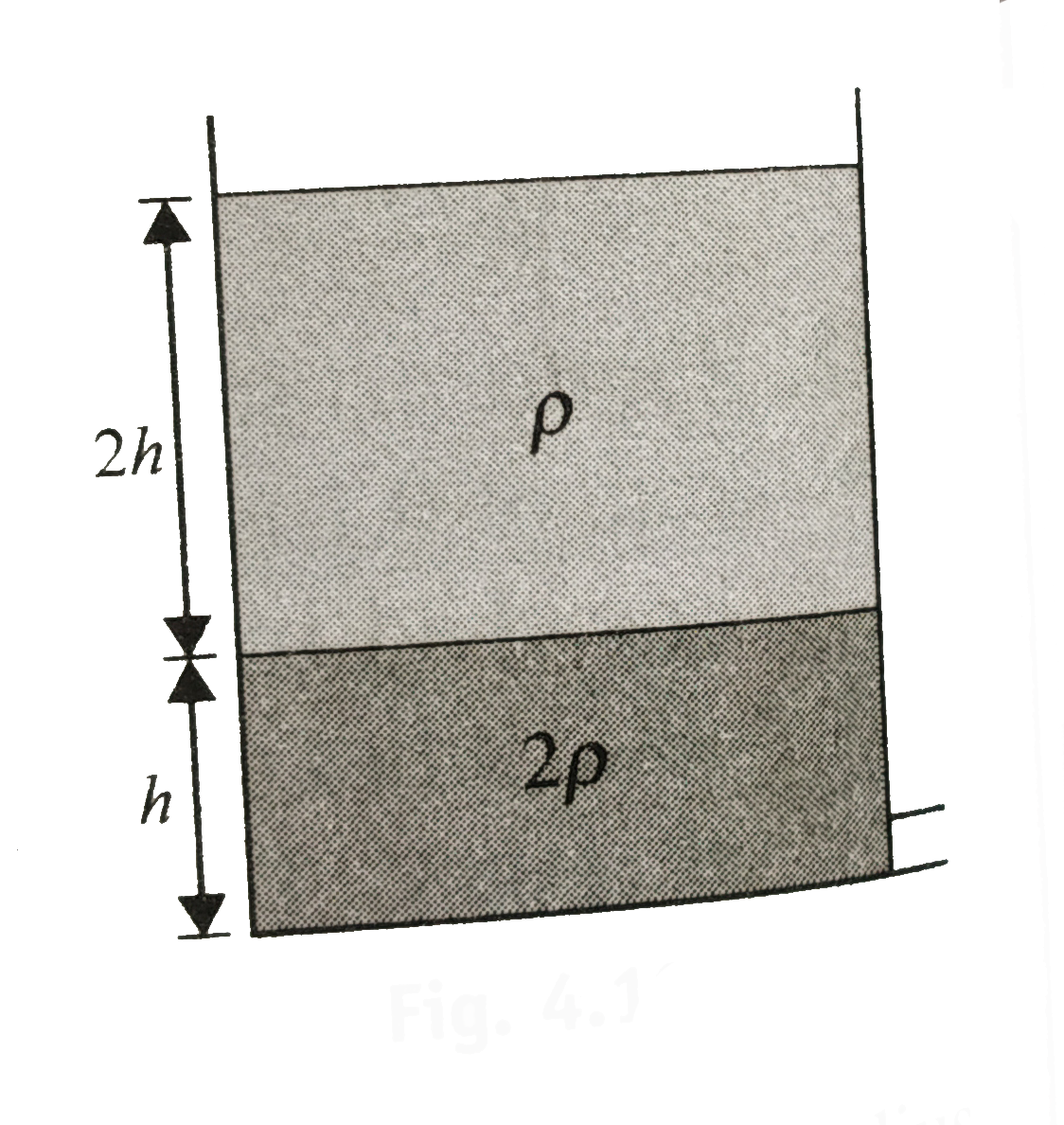
View Solution

